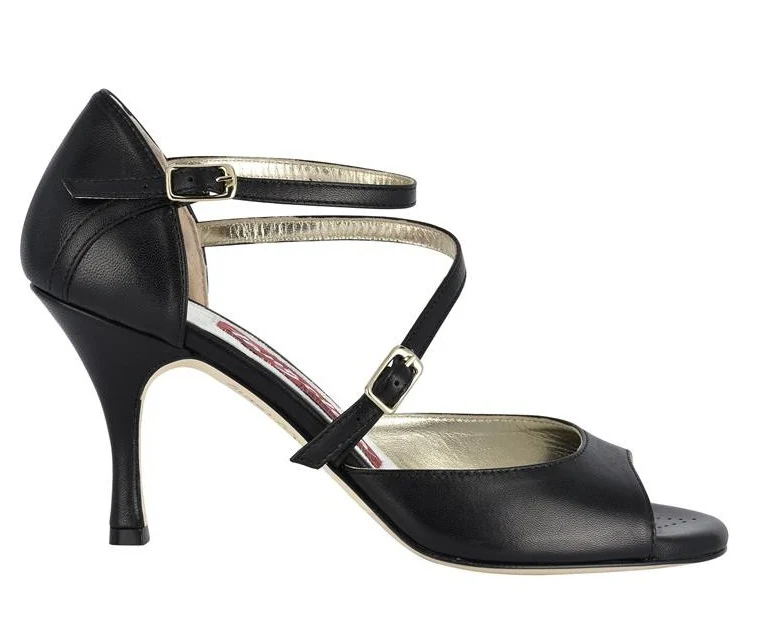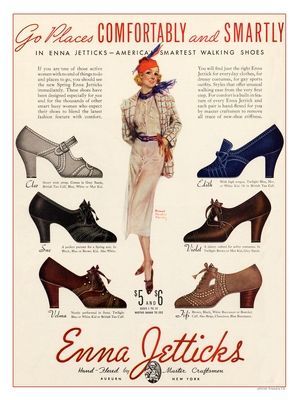Swing Dance Shoes
- Christine Simpson
- Nov 22, 2024
- 6 min read
Updated: Nov 28, 2024
All of this is subjective, and there is no one correct answer and some of this might not work for you but I have A LOT of opinions on this topic. None of this is monetised or affiliate linked in any way, I just really care about it. I love dancing in heels because of how it affects my posture, the ease it gives me in rotation, and the way they look. These are my criteria for good swing dance shoes from total dealbreakers to nit-picky details:
No stiletto heels- they're just not stable enough for most people and they can cause pretty catastrophic injuries if you step on someone, so I don't think they belong on the swing social floor. This rules out most ballroom/tango/latin dance shoes.
Both of these heels are too narrow to feel safe for me
Slippy leather soles- I feel so clunky in any heels that don't have leather soles. There are some hard plastics that do an okay job but anything rubber feels like dance hell to me.
Smooth uppers- plain leather is my preference here. Patent leather sticks to itself and you can end up tripping yourself (especially in balboa), suede is nice but tends to stretch significantly over time in some designs, imitation leathers tend to chip/crack over time and you can't repair them so that feels wasteful to me. Plain leather is also easy to paint/dye over and over so if you get tired of your shoes you can give them a makeover anytime.
The shoes either need to come up high across the vamp or have a strap below the ankle in a Mary Jane or t-bar style. This allows the shoe to be slightly looser on your foot (no pinching) without risking the shoe falling off or requiring you to clench your toes to keep them on.
Strong toe box, nothing open toe. You want to protect your feet on busy social dance floors so your partner accidentally stepping on you won't ruin your night. I'm not suggesting steel cap boots here, but something with a bit of body around the toe will be enough. Similarly you want a shoe that holds on to your foot and doesn't just push against your toes. For my feet the worst offenders are the remix balboa shoes, which are very soft flexible leather and look cute but provide zero support or protection so my toes are in agony by the end of the night.
Heel height of 2-3", anything less doesn't give me the effect I want and anything more starts to sacrifice foot flexibility. Similarly, no serious platforms, they stop you from being able to feel and use your feet on the floor properly.
Curved balanced heel- this is where we start getting into the weeds. Modern shoe designs tend to be a uniform chunky heel or a cone shape heel set too far to the back of the shoe to bear your weight comfortably. Sensible 1920-50s heels tend to start wide, go narrow then come out wide again as they reach the floor. this means even if your foot lands at a slight angle you're not going to lose your footing or roll your ankle.
This style of heel is also centred directly under the heel of your foot so you don't wobble front to back or side to side. These two qualities together make the difference between a pair of shoes you can only wear for an hour vs. a pair you can wear over a whole weekend of classes and socials.

This is an illustration of shoes from the 1800s, they would have all felt very stable because the heel is both curved and positioned well forward of the back of the foot so your centre of mass is directly above the heel centre most of the time. This design stayed popular until the 1960s when block and cone heels became popular.
Both of these heels are way too close to the back of the shoe to support your weight for a long time.
Flattering straps- Any straps should be gradual and positioned so they hold your foot not your ankle. Not only does this look better on a wide footed gal like myself, it's also so much comfier and supportive. A lot of modern shoe ankle straps keep the shoe on your leg but they don't keep your foot in the shoe.
The black shoes are good, the t-bar and the shape of the straps hold the foot below the ankle and they taper gradually from the shoe so they don't cut off your circulation. The other two are both bad, the beige ankle strap is holding exactly at the joint and there is no smooth transition from shoe and in order to be effective they need to be really tight and will make your feet look like hams wrapped in tight string. The ankle strap on the silver shoe is basically decorative, it's not holding the foot in the shoe at all.
Wooden Heels- this is very demanding, but it makes a huge difference. Non-stiletto reproduction vintage heels are often made with a plastic heel covered in leather, and the bounce just is not the same. Wooden heels have a strength and give that makes them insanely easy to dance on for long periods. If this weren't the case I'd be wearing loads of designs from companies like American Duchess and Memery, but sadly they just never feel right.
Are there any shoes in the world that meet all these criteria? Yes, and weirdly they are from the world of flamenco dancing:

This is my favourite: Bicolor by Begoña Cervera
These are also good
The combination of customisations I like are plain leather colours (if in doubt go light and paint/dye them to your preferred shade), with an all leather sole, and a Carette 6cm heel covered in standard matching plain leather (though the painted wood is very tempting and was very fashionable in the 1940s). The only special note you need to make is to ask for swing soles that are all leather in the comments section, otherwise you'll get rubber street soles.
If custom shoes are not right for you right now, then there are many cheaper quick options to try:
If you have a pair of very comfortable heels you want to dance in but the soles aren't leather, you can take them to Langley's and get a suede sole added to them. They'll start out a bit grippy but the suede will eventually compact down and become beautifully slippy.
If you're keen to get the slip without the heel or you'd just prefer to avoid leather, classic toms shoes have a very slippy synthetic sole. There are always some on ebay, and you want the older models anyway so buying secondhand is better. They make all sorts of shoes now with rubber soles. so make sure you check the soles look like this:

You can try character shoes from dancewear shops, which are typically used for musical theatre performers and come in black or tan/beige. The best one I found was the Bloch Roxie character shoes. They tend to cost between £30-60 and they're built for stability and movement. I'd say these particular shoes meet most of my requirements except the strong toe box and the wooden heel, and that means that they get a bit sore after a few hours of dancing, and don't provide much protection if you get stepped on, but they tick all the other requirements. The Capezio Chrissie T Strap Character shoes also look okay.

If you have shoes you like already or you buy some bland character shoes you can always customise them with angelus paints or dyes. Other brands exist but nothing with the same range of colours and textures. I repaint my shoes every year or so to either touch them up to be perfect again or give them a complete makeover if I notice I'm not wearing a particular pair very much.
And finally, for the brave and vintage enthusiasts out there- lots of old shoe styles were made with leather soles and much higher vamps so they hold on really well. Obviously finding your size is the main challenge here, but it absolutely can be done. Once you find them, you'll have unique shoes and they'll last for ages.



















